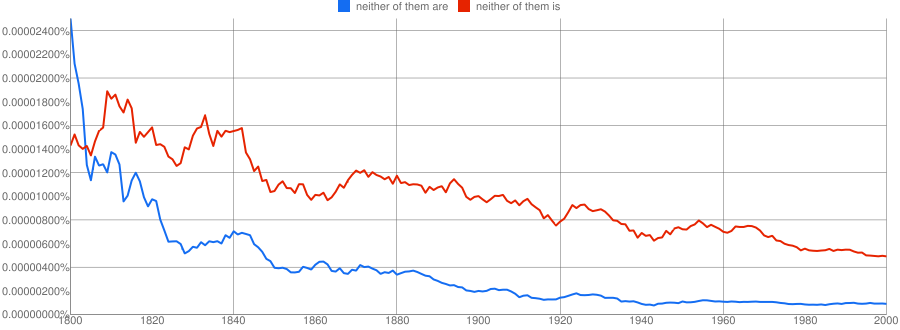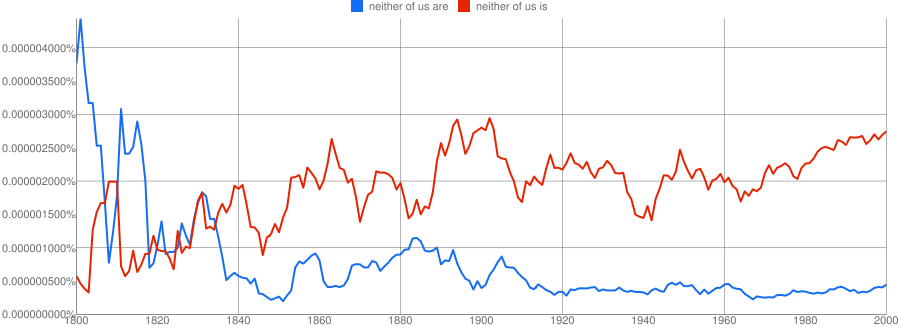Despite what Fowler said, partitive constructions with neither seem to have taken mostly plural agreement until some time in the 1800s, as can be seen with the graphs for neither of them and neither of us 
 . But it does seems that singular agreement is most common today.
. But it does seems that singular agreement is most common today.
Neither of them is/are

Neither of us is/are

